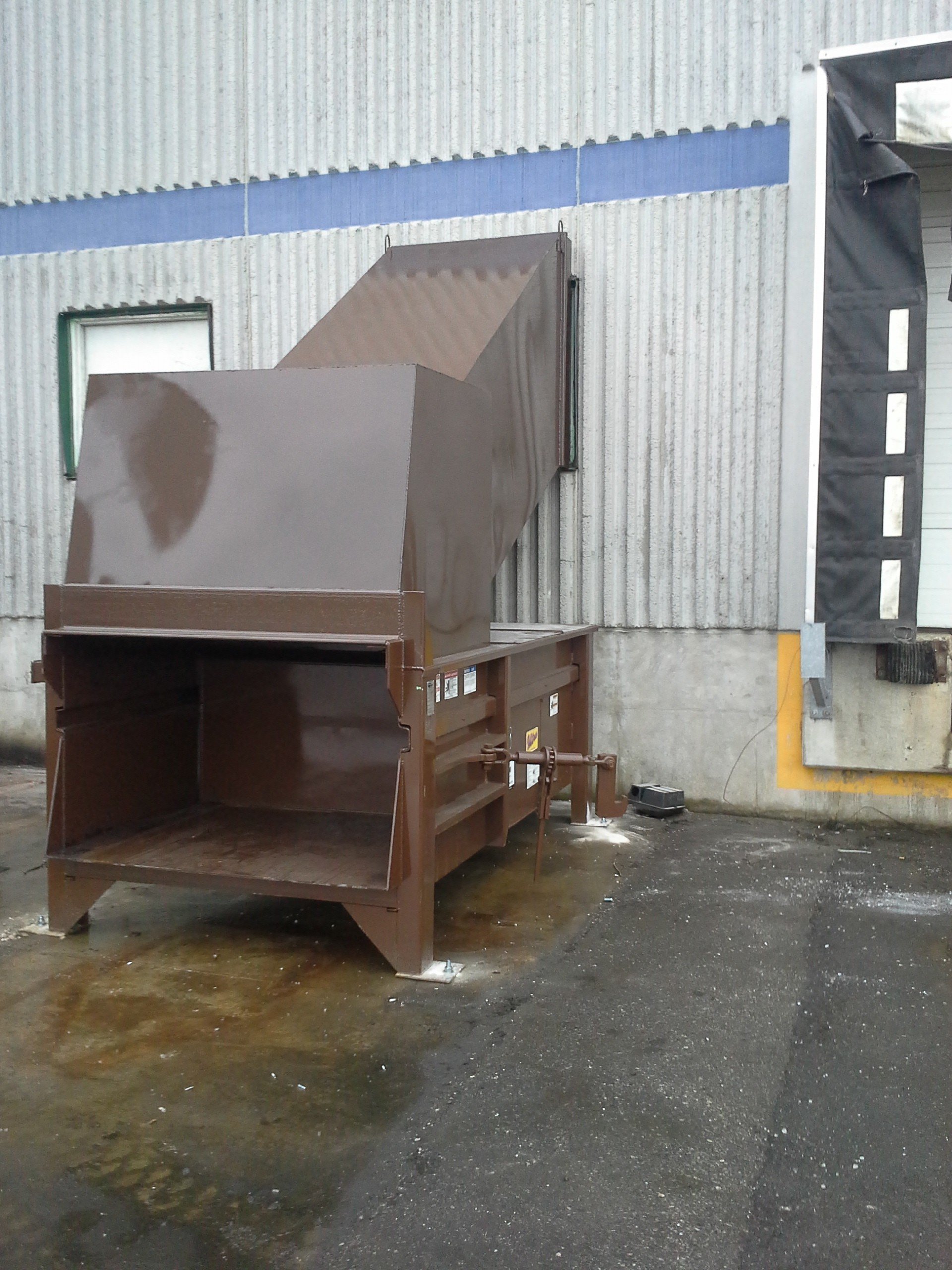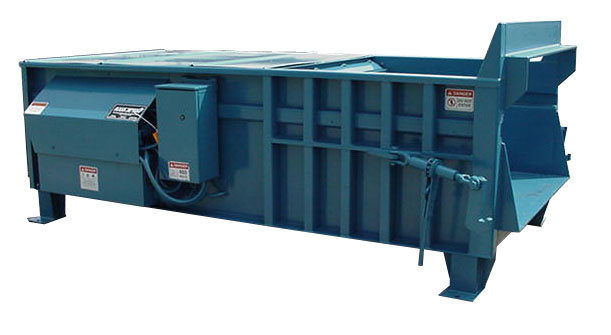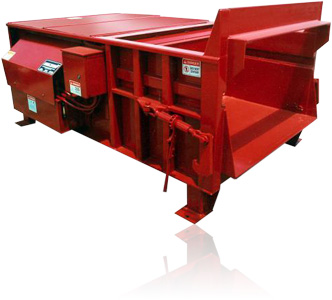Comprehending the Numerous Usages of Waste Equipment in the Recycling Market
The reusing market relies heavily on specialized waste equipment to optimize handling and recuperation. Each device, from shredders to balers, serves a distinctive function that improves overall performance. Comprehending these duties is crucial for enhancing sustainability efforts. Commercial garbage compaction equipment. As modern technology breakthroughs, brand-new developments emerge, promising to transform standard practices. This development elevates crucial questions regarding the future of waste administration and its impact on ecological conservation. What adjustments exist in advance for this essential industry?
The Duty of Shredders in Product Handling
Shredders play an important function in the recycling market by efficiently refining different sorts of waste products. These devices are made to lower huge things, such as plastics, metals, and natural waste, into smaller sized, workable items. This dimension decrease is important for succeeding recycling processes, as it enables much easier handling and sorting. In addition to assisting in recycling, shredders boost safety by decreasing the danger of injury linked with managing large waste items.
Shredders add to ecological sustainability by ensuring that materials are processed in a means that makes best use of source recovery. They can take care of a varied range of materials, making them versatile tools in waste monitoring centers. The efficient operation of shredders not only simplifies the reusing procedure but likewise boosts the overall efficiency of waste diversion initiatives, promoting a circular economic climate. Their significance in material handling can not be overemphasized, as they act as a fundamental action in the direction of sustainable waste monitoring methods.

Just How Balers Enhance Effectiveness in Waste Administration
Balers considerably enhance performance in waste management by condensing numerous materials into bales, which simplifies storage and transportation. By pressing recyclables such as cardboard, plastics, and metals, balers substantially decrease the volume of waste. This compression not just maximizes area in recycling centers yet likewise minimizes the variety of journeys called for to deliver materials, leading to reduced fuel expenses and minimized environmental effect.
Additionally, balers add to improved security in waste monitoring procedures. Portable bundles are less complicated to handle and stack, reducing the threat of accidents connected with loosened products. The consistent dimension of bales allows for a lot more reliable loading and discharging procedures, improving procedures within reusing facilities. Additionally, balers can boost the overall top quality of recyclables, as appropriately compacted products are less likely to be polluted. Generally, balers play an essential function in maximizing waste monitoring methods, promoting sustainability in the recycling sector.
Conveyor Equipments: Simplifying the Recycling Process
Integrating innovative machinery like balers considerably enhances waste monitoring procedures, but the effectiveness of the reusing procedure is better enhanced with using conveyor systems. These systems play an important function in the smooth transportation of materials within reusing centers. By promoting the movement of different waste types, conveyor systems lessen manual handling and reduce the threat of contamination during the reusing process.
Moreover, conveyor systems can be personalized to fit the distinct layouts and functional demands of recycling facilities. Their capability to run constantly permits a steady circulation of products, boosting productivity and ensuring that sorting and refining equipment gets a regular supply.
Equipped with features like adjustable rates and automated controls, conveyor systems can maximize the flow of materials, news substantially improving overall performance (Commercial garbage compaction equipment). Consequently, these systems are indispensable in contemporary recycling operations, adding and streamlining procedures to reliable waste administration
Sorting Devices: The Trick to Material Recuperation
Sorting makers are crucial parts in the reusing sector, substantially enhancing the effectiveness of product recovery. These devices play an essential duty in the separation of different recyclable materials, permitting a streamlined procedure that makes best use of source extraction. By utilizing advanced modern technologies, such as optical sensors and air classifiers, arranging equipments can determine and classify products based upon their composition, weight, and dimension. This capacity ensures that steels, plastics, and paper items are effectively isolated, minimizing contamination and enhancing the high quality of recycled outcome.
The operation of sorting devices significantly reduces the dependence on manual labor, which can be both prone and time-consuming to mistakes - Commercial garbage compaction equipment. Additionally, the automation given by these equipments accelerates the total recycling click this process, resulting in greater throughput and increased operational effectiveness. As a result, sorting equipments are indispensable in attaining lasting waste administration goals, enabling the recycling market to efficiently recover valuable products while lowering land fill dependence

Developments in Waste Tools for a Sustainable Future
Recent improvements in waste equipment are driving the reusing market towards a much more sustainable future. Technologies such as automated sorting systems, which make use of artificial knowledge and machine learning, enhance efficiency by precisely determining and dividing recyclables. This results in higher recuperation prices and decreased contamination. Additionally, developments in compacting modern technology permit a lot more effective transportation of materials, minimizing carbon impacts throughout transit.
Innovations in shredding tools boost the handling of intricate products, allowing the recycling of products that were as soon as regarded non-recyclable. The combination of renewable resource sources, like solar power, in waste processing centers even more adds to sustainability goals. Additionally, innovations in waste-to-energy technologies and biodegradable materials are reshaping the landscape of waste administration. Collectively, these advancements signify a transformative change within the reusing sector, advertising not only environmental management yet additionally financial feasibility for future generations.
Often Asked Inquiries
What Kinds of Products Can Waste Tools Manage?
The kinds of products waste devices can take care of consist of plastics, metals, paper, glass, and natural waste. Each tools type is created for certain products, optimizing effectiveness and efficiency in sorting and processing numerous waste streams.
Just How Usually Should Waste Equipment Be Maintained?

Exist Safety Issues With Making Use Of Waste Equipment?
Safety and security interest in using waste tools consist of possible injuries from mechanical malfunctions, exposure to hazardous products, and poor training. Correct upkeep, normal assessments, and employee education and learning are important to reduce these threats properly in any browse around this web-site kind of setting.
What Is the Typical Life-span of Recycling Devices?
The ordinary life expectancy of recycling equipment generally ranges from 10 to two decades, depending on factors such as usage intensity, maintenance techniques, and technological developments, which can substantially influence durability and performance with time.
How Is Waste Devices Powered in Recycling Facilities?
Waste devices in recycling centers is commonly powered by electricity, though some devices may utilize alternate power resources like all-natural gas or diesel. This power allows effective handling and makeover of products for reusing functions.
Shredders play an important role in the reusing industry by successfully refining numerous types of waste products. They can manage a diverse range of products, making them flexible tools in waste monitoring facilities. Balers greatly boost efficiency in waste monitoring by compacting different products right into bales, which streamlines storage and transport. The types of products waste devices can handle include plastics, steels, paper, glass, and organic waste. Safety and security issues with utilizing waste equipment include potential injuries from mechanical breakdowns, exposure to harmful products, and poor training.